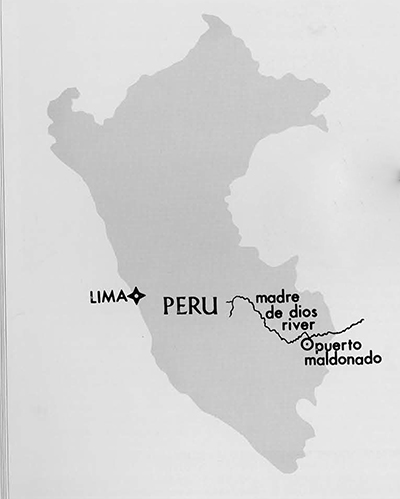 The settlement of Concepcion is recently founded, small (a total population of 212), and isolated. Located southeast of the town of Puerto Maldonado, Concepcion is situated on the banks of the Madre de Dios river within that eastern section of Peru known as la Montana. This geographic zone comprises a tropical forest environment that is unique to South America. Its proximity to the Andes is attested to by the presence of many hills and fast flowing streams.
The settlement of Concepcion is recently founded, small (a total population of 212), and isolated. Located southeast of the town of Puerto Maldonado, Concepcion is situated on the banks of the Madre de Dios river within that eastern section of Peru known as la Montana. This geographic zone comprises a tropical forest environment that is unique to South America. Its proximity to the Andes is attested to by the presence of many hills and fast flowing streams.
The settlement was established in 1956 by a Spanish physician operating as a secular Roman Catholic missionary. The physician and his family have worked to attract settlers by providing jobs in a lumber mill they built. In addition to his role as the leader of the settlement, the Spanish physician practices medicine on a part-time basis in the nearby town of Puerto Maldonado. His family, including a wife who is a nurse and two adult sons and an adult daughter, has been augmented by other secular missionaries from Spain who, as the administrators, comprise one of the three cultural groups in Concepcion. The other two groups are los Serranos and la Gente. Los Serranos are individuals native to the Sierra (highlands) of Peru who travel to the montane settlements in search of greater economic opportunities. La Gente are natives of in Montana who also have been attracted to the settlement for the jobs provided by the lumbering operation.
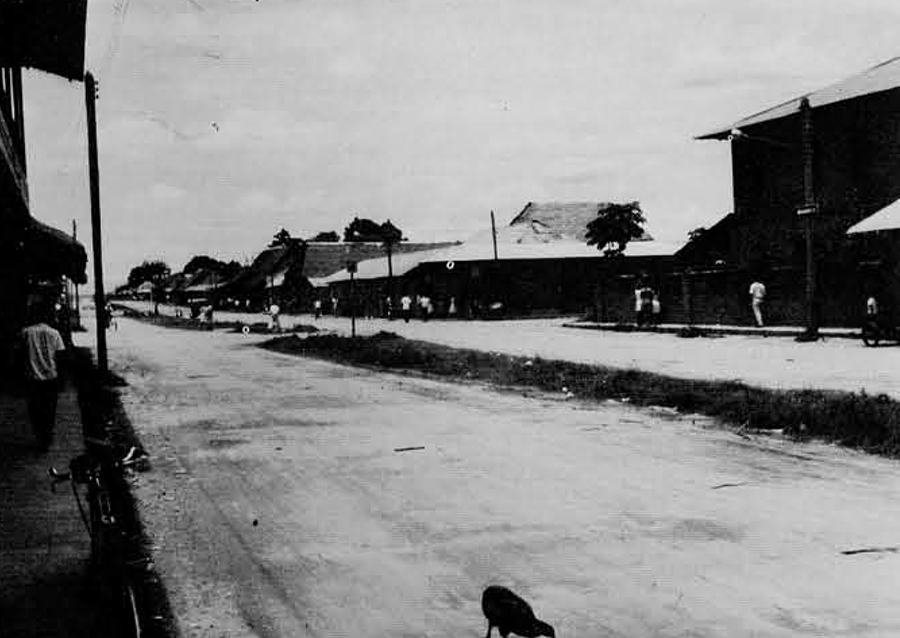
La Gente are the largest of the three groups living in Concepcion. As stated above, all members of this group are: born in la Montana, have at least one parent who is a native of in Montana, and are fluent in Spanish. Living in isolated nuclear family units, la Gente clear and maintain small farms known as chacras. All families engage in slash-and-burn agriculture and the agricultural harvest is supplemented by hunting and fishing. Within the settlement and in the town of Puerto Maldonado, la Gente are beginning to augment their traditional economic pursuits by acquiring part-time jobs providing a cash income. The exposure to wage earning and the concomitant interaction with members of other cultural groups have resulted in considerable acculturation.
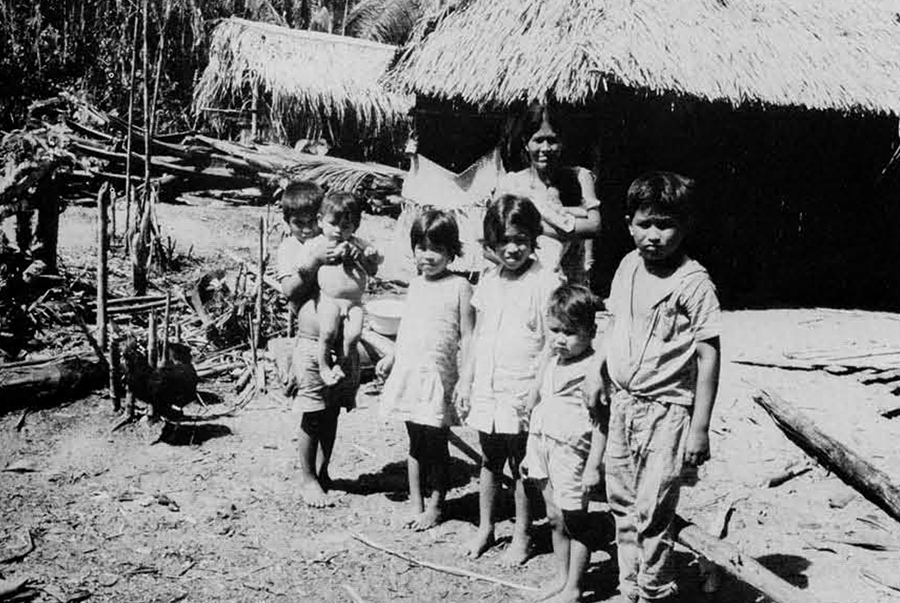
Members of la Gente display an impressive lack of concern for most health problems endemic to the area, In this context, children are taught to endure discomfort and pain with stoicism and courage. Adults tolerate problems that are culturally defined as being of “minor significance” despite the frequent and severe discomforts these ailments may cause.
Attitudes concerning what constitute the major health threats existing within the settlement vary significantly; however, a similarity in attitudes is seen within the respective cultural groups. As an example, the physician, representing the administrative element, states that the three major health threats, in order of importance, are: 1, Parasitic infection; 2, Tetanus; 3, Accidents.
In contrast, a survey of the adult la Gente group provided the following assessment of the three major threats: 1, Tetanus; 2, Asusto; 3, Snake bite.
(Asusto is a disease produced by an individual’s suffering great fright. Symptoms include intestinal problems, fatigue, lack of appetite and general discomfort. This disease is very common in children between the ages of one to five years. A disease in which similar symptoms are defined is frequently referred to as susto in other parts of Latin America.]
Not all adult members of la Gente ranked the diseases in the order given above; however, over 75% of the group agreed that these three diseases constituted major health threats.
These variations in the attitudes toward health threats are indicative of the role culture plays in determining the group’s recognition of the specific problems. The physician and la Gente live in the same environment; however, they do not agree with respect to what constitute the major health threats. In fact, the physician emphatically denies the existence of the disease la Gente call asusto despite the fact it is considered to be a major threat to health by over 80% of the group.
The Selection of Health Care by La Gente
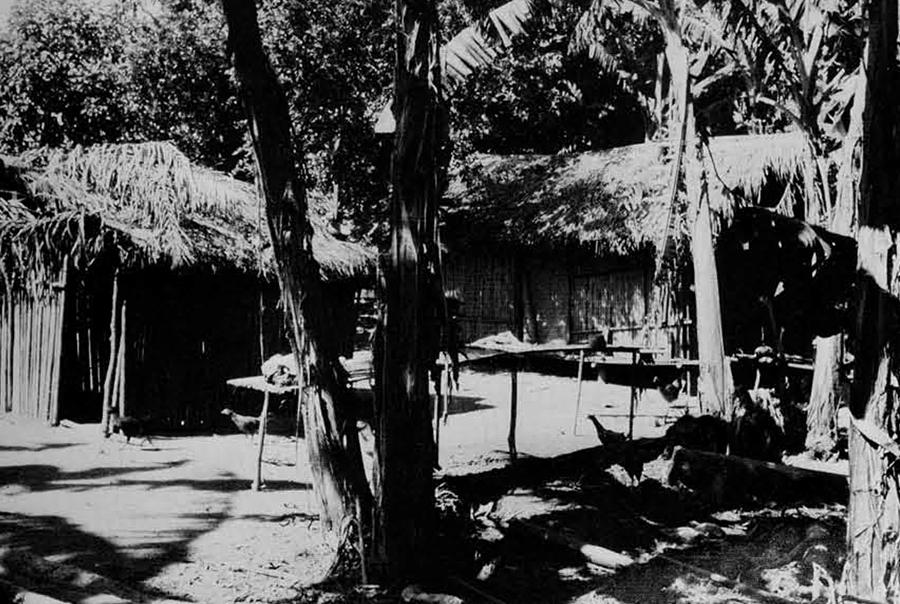
The selection of care in Concepcion is of particular interest because there are two agents of professional care available, the Spanish physician and curanderos. The Spanish physician is the only practitioner available to la Gente of Concepcion trained in the techniques of modern medicine. He received his medical education in Madrid prior to the Spanish Civil War; during the war he worked as a field physician for Franco’s forces. His age at that time (1969) was 65. A curandero is a native of la Montana who has acquired a reputation for his or her skills in curing one or more categories of illness or injury. A curandero relies heavily on incantations, potions, spells, faith, and the medicinal value of jungle plants, A curandero develops his skills as an apprentice to another curandero or through a mystical experience which has convinced the individual he or she possesses a gift for healing. Some curanderos are specialists, treating only one disease; others attempt to deal with the total range of medical problems encountered in the montane. Occasionally a curandero will be a full-time professional; however, most work their chacras while practicing on a part-time basis. A curandero practices from his home and patients who require extended treatment live in that home. Treatments administered by a curandero vary in duration, the time required being dictated by the nature and severity of the disorder; in some cases, a single visit suffices, but numerous visits, and treatments, are more common.
Medical care initially takes place in the patient’s home. A professional source of care is selected only when home treatment fails to yield satisfactory results, or when a catastrophic disorder strikes rapidly. Home care usually consists of rest and a special diet. These special diets vary with the nature of the disorder; however, in all cases certain foods and drinks commonly consumed are denied the patient while others are consumed in greater quantities than usual. Teas, made from boiling the leaves of several indigenous plants, are particularly popular.
The decision to seek professional care is normally made when the symptoms displayed by the patient are considered to be serious. The criteria used to define a state as serious vary from family to family, and with respect to the age of the afflicted individual. Myriad factors influence the speed with which families seek care; however, one of the more important is their economic status. Those with greater resources are much more likely to define a condition as serious and consequently initiate a search for professional aid. The economic role of the afflicted individual is also a factor determining the speed with which professional care will be sought, The male, as head of the household, can ill-afford days of recuperation and will seek out a professional rapidly; in contrast, the child must display particular disturbing symptoms before his condition is defined as serious. In the words of la Gente, “a child will have periods of poor health and he must learn to tolerate them.” The decision to seek Professional aid is usually made by the husband; however, where he is absent the wife will make the decision. This delegation of authority will usually result in a delay, for the wife is unaccustomed to making such critical decisions and it is rare that she will act promptly.
As stated above, la Gente have two sources of professional medical care available, the physician and the curandero. Which to choose is decided by a consideration of the particular situation. Of primary importance is the nature of the injury or disease. There are health problems that are considered amenable to treatment by the physician and others that are viewed as being exclusively within the competence of the curandero. The physician is respected for his skills with respect to tetanus, parasitic infection, fractures, lacerations, and most childhood diseases. The curandero is considered to be particularly skillful with respect to asusto, coIlico (a general category of intestinal ailments), snakebite, and the effects of black magic. Since several of the diseases recognized by la Gente are outside the conceptual framework of disease definition used by the physician, la Gente pursue the care offered by a curandero. Occasionally, la Gente will consult the physician if the condition has not been precisely defined; however, in any case in which the patient is convinced he is suffering from asusto he will avoid the physician. This avoidance is based on two factors: first, la Gente believe the physician is not capable of curing the disease and second, they are embarrassed by his consistent dismissal of the disorder as a “superstition.”
The cost of the physician’s care is another factor which works to the curandero’s benefit. In many instances, members of the group shifted their reliance from the physician to the curandero because of the high cost of the drugs prescribed by the former. La Gente specifically complain of the cost of the medicines prescribed and not the fees charged by the physician for his professional services: In fact, several members of la Gente said, “he (the physician) does not charge too much, but the medicines are much too expensive.” The curandero adjusts his charges to the economic capabilities of the specific patient; ‘moreover, his total charges are much less than those of the physician.
From a social perspective, many members of la Gente view the physician as a prestigious intruder and feel ill at ease with him. The physician’s accent, his education and his behavior in general make relaxed communication difficult. Conversely, the curanderos are accepted as talented and highly respected friends, and la Gente are at ease in their presence. In this context, both the physician and the curandero are expected to express grief if a patient dies. The curandero’s articulation of grief is invariably more effective for he understands how to structure his condolences. In contrast, the physician’s attempts at sympathy are expressed awkwardly La Gente frequently comment on the lack of sensitivity expressed by the physician; however, it is rare that this will be cited as a specific reason for preferring the treatment of a curandero. It is my belief that this social awkwardness is in fact an important factor contributing to reducing the attractiveness of the physician as a source of health care.
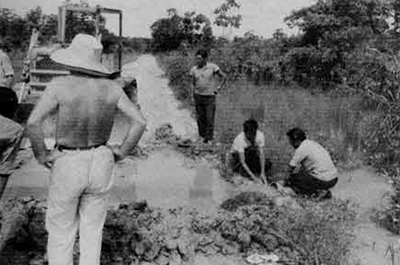
La Gente are sophisticated enough to realize that the small, isolated jungle town of Puerto Maldonado may not attract the most qualified physicians. They recognize that the poverty of the inhabitants, the lack of supporting medical facilities, and the fact that life for the physician and his family will be more difficult than they are accustomed to, combine to produce conditions which are not conducive to attracting most professionals. Hence, they are skeptical of those who do come. This skepticism, which is widespread throughout la Gente, would no doubt come as somewhat of a shock to the physician if he were informed of it, as he views la Gente with a rather profound and condescending paternalism.
Accessibility is another factor influencing the selection of professional health care. The greater mobility of the physician makes it likely he will be absent when needed; in contrast, the curandero remains close to his chacra and is usually available. La Gente frequently complain of the problems they have encountered when they have been ill and tried to locate the physician. Again, it is apparent that this pragmatic problem is, no doubt, a key factor influencing the selection of health care.
The physician’s proclivity to criticize a patient if he does not follow his advice has resulted in the alienation of many members of la Gente. Conversely, the curandero is much less likely to scold or ridicule a patient; moreover, the advice he does provide is offered in a manner which does not make the recipient feel he is receiving an authoritarian command. Also, the curandero does not implement tests that disturb the patient; conversely, the physician’s demands for physical specimens such as stool or blood samples often result in disturbing the patient.
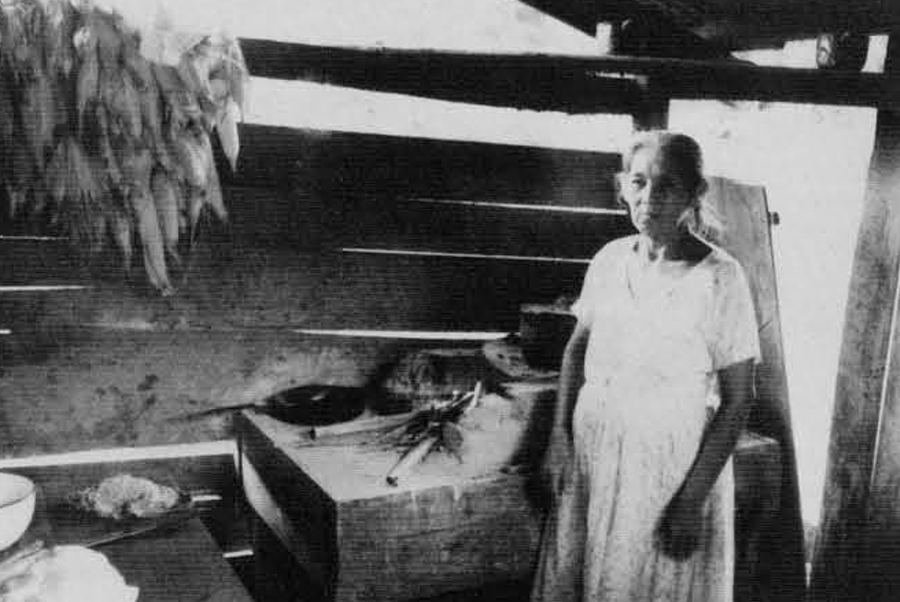
La Gente explain failures of the curanderos by a complex system of rationalization. As an example, many persons are said to have inherent weaknesses which make it impossible for even the most skillful of curanderos to cure them. This inherent weakness rationalization is not enjoyed by the physician. On the contrary, his efforts are viewed coldly in terms of success or failure. In addition, the physician is often turned to after a curandero has failed to cure a patient. In fact, the curandero will occasionally suggest that an extremely ill individual go to the physician. This practice results in a disproportionate number of the seriously, if not terminally, ill being treated by the physician. In such cases, the responsibility for the patient is immediately shifted from the curandero to the physician. The latter stated that frequently the diets and cures used by the curandero had debilitated the patients to the point of death before they have been referred to him. It is indeed possible to see the effectiveness with which the curandero is able to implement such strategy to increase his own reputation at the expense of the physician. The physician also competes with the legends that exist concerning the reputed exploits of deceased curanderos—feats sometimes approaching the miraculous; nevertheless, the physician is expected to match them, and when he fails his prestige suffers. All failures by the physician are long remembered by la Gente. The history of his “failure” is passed from person to person and frequently the story is embellished and exaggerated with time.
Despite the effective tactics employed by the curanderos in competing with the physician, several factors have allowed the physician to enjoy a significant measure of success in gaining new patients. Of primary importance has been the respect the physician has earned by his success in treating specific health problems; in this context, the efficacy of his medicines and drugs has no doubt been of critical importance. In particular, the antibiotics he uses to combat many types of infection are viewed with respect by la Gente who also have great respect for his entire collection of tools and medicines. This impressive inventory, of itself, is a factor in convincing some members of the group that they should rely on the physician’s care, Many members of la Gente have said, often after directing rather critical comments to the physician, “it is true that he has many things with which to help one.” His collection of surgical tools, even though many are not in the best of repair, proves that he is indeed a gifted man with “much education.”
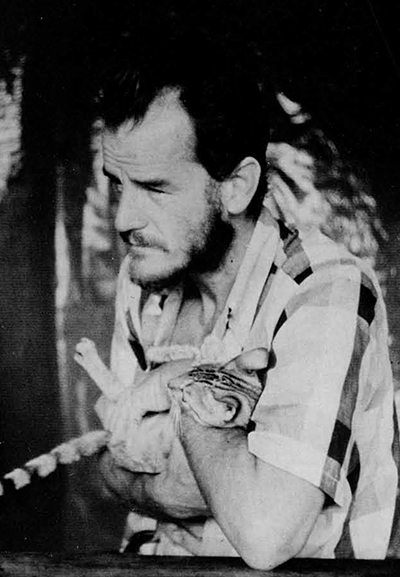
Most members of la Gente understand that a physician has spent many years being educated and their appreciation of this fact also attracts patients. Finally, the fact that so many of the respected and well educated outsiders who come into the settlement express faith in the physician has worked to increase his attractiveness. Several members of la Gente have said “while I believe in the curandero it is true that all those who have Come in from outside are using the physician.”
In conclusion, it should be stressed that the relative attractiveness of the physician and the curanderos differs between families and individuals among la Gente. There is no single “attitude” directed to the physician, but rather there are many, depending upon the specific experiences an individual has had. This analysis indicates the range of factors that are considered in the formulation of these attitudes—attitudes which become of critical importance in determining to whom la Gente go when ill.
There is one practical consideration that promises to significantly influence the selection of health care in the future. This involves a decline in the number of practicing curanderos available in the Puerto Maldonado region. A growth in the popularity of formal education for children and an increase in economic opportunities have made it less likely that a young man or woman will become a curandero. At present, there are a sufficient number of curanderos in the area; however, in the future this decline in the popularity of the profession may become a factor contributing to la Gente’s increased reliance on the physician.
From the perspective of the application of anthropology, these data indicate that it is imperative that the physician, or public health worker, be aware of possible variations in disease definitions utilized by members of other cultures, if he, or she, is to be successful in implementing a health care program, Also, to acquire the support of the population, the physician must be cognizant of the decision making process members exercise when selecting a source of health care. For example, the physician must be aware that his behavior in the community, and specifically the ease with which he interacts with members of the group, may be more important in establishing his attractiveness as a source of health care than an impressive fist of medical successes. The data also provide examples of the range of problems the physician will face when attempting to attract patients. It is important that he be aware of the highly critical perspective that members of another culture may maintain with respect to his motivations, talents and techniques.
Finally, the physician, or public health worker, can ill-afford to underestimate the skill of the local healers with whom he is competing for the confidence of the people. The local healer is usually a capable and highly respected individual and it will behoove the physician to treat him with the respect he has earned, To fail to accord this respect, or to ridicule the healer’s medical knowledge and methods of care, will seriously jeopardize the physician’s chances of playing an important role in addressing health problems in the community.
